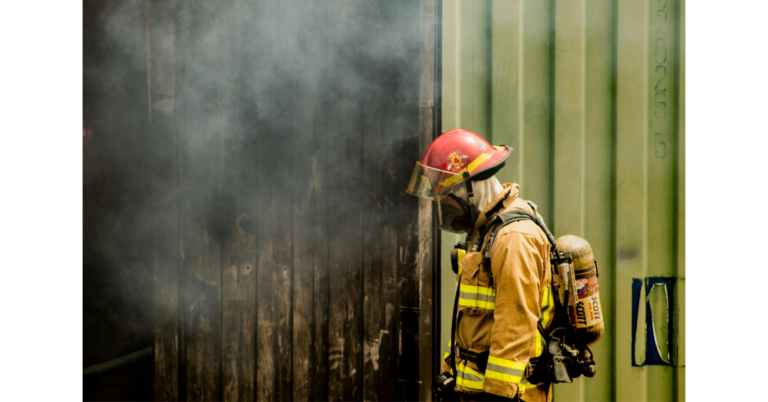In the world of fire suppression, traditional firefighting foams have long been hailed for their ability to rapidly extinguish fires and prevent re-ignition. However, in recent years, these foams – particularly the AFFF foam – have been criticized for containing per- and poly-fluoroalkyl substances (PFAS).
These “forever” chemicals, once celebrated for their effectiveness in suppressing fires, are now linked to health issues and environmental contamination. The growing awareness of these risks has led to a global demand for a safer, PFAS-free firefighting technology.
In light of this, researchers and manufacturers are striving to develop new foam formulations without the adverse effects of PFAS. Some alternatives have already been developed and are currently being tested.
Join us as we explore these alternatives and attempt to address what the future of firefighting might look like.
How Do Firefighting Foams Work?
Before taking a dive into AFFF firefighting foams and their potential replacements, we must first understand how firefighting foam even works.
The U.S. Fire Administration notes that firefighting foams by forming a blanket-like layer over liquid fuel (often the source of Class B fires). The blanket formation not only suppresses the fire but also acts as a barrier over the liquid, preventing it from further ignition.
Keeping that in mind, the mechanism of firefighting foam is quite straightforward. The more long-lasting and stable the foam blanket is, the more effective job it does at containing and extinguishing fires.
The Issue with PFAS-containing Firefighting Foam (AFFF)
The aqueous film forming foam (AFFF) firefighting foam is a technology that’s been a staple in the firefighting industry for decades. TorHoerman Law observes that the foam was first produced in the 1960s by 3M and the US Navy.
Compared to the firefighting foams that came before it, AFFF was a big hit across the industry for a good reason. Its advanced technology lent it a much longer shelf life than its older alternatives. AFFF also had lower application rates; it was relatively easy to proportion and more forgiving in application technique.
Its equipment requirements were also quite ordinary. Instead of needing a specialized foam tube or air aspirating nozzles, AFFF could be applied using standard fog nozzles.
Despite all its advantages, AFFF had one major, life-threatening disadvantage – the presence of PFAS, or “forever,” chemicals in them. After studies linked these chemicals to cancer, AFFF emerged as a significant threat to firefighters. The International Association of Firefighters noted how occupational cancer had steadily become the leading cause of line-of-duty deaths in the fire service.
The increased awareness of firefighter foam cancer led many firefighters to file a lawsuit against its manufacturer, 3M. The most common cancers that are observed in the current AFFF lawsuits include prostate, kidney, pancreatic, and testicular cancer.
Besides its health concerns, the PFAS found in AFFF is also a threat to the environment. These chemicals have a notorious reputation for being extremely persistent. They don’t break down easily, sticking around in the environment for a very long time. When AFFF is used, PFAS can leach into soil and water sources, leading to long-term contamination that’s tough to reverse.
Wildlife, especially aquatic life, is particularly vulnerable to PFAS. When fish and other marine organisms absorb these chemicals, it leads to toxic effects that can disrupt entire ecosystems. It is for all these concerns that a departure from PFAS-containing firefighting foam is the need of the hour.
SFFF Firefighting Foam – A Safer Alternative to AFFF Firefighting Foam
Synthetic fluorine-free foam (SFFF) represents a new generation of firefighting foam designed to extinguish fires without using harmful PFAS chemicals. This technology uses the alternate chemical formulations of PFAS to suppress fire.
SFFF is composed of water, solvents, hydrocarbon surfactants, and a mixture of hydrocarbon surface-active agents. These components work together to suppress fires effectively.
In September last year, a 3% SFFF concentrate manufactured by SOLBERG passed the quality standards set by the U.S. Federal Air Administration (FAA). With that, it became the first fluorine-free firefighting foam to be added to the Department of Defense’s Quality Product List (QPL).
As SOLBERG has pioneered a PFAS-free firefighting foam technology, other manufacturers are bound to follow suit. And soon, we can hope to replace the harmful AFFF from the firefighting industry globally.
Frequently Asked Questions (FAQs)
Is AFFF the only source of PFAS chemicals?
No, it sadly isn’t. Besides the firefighting foam, several other consumer products also contain PFAS. Examples include Teflon pans, rain jackets, fast food wrappers, and bakery papers. The forever chemicals also find widespread application in the manufacturing and aerospace industry.
Can reverse osmosis remove PFAS chemicals from water?
Yes, reverse osmosis can remove PFAS chemicals from water, but not completely. The process uses a high-pressure membrane technology to remove 90% of the PFAS chemicals, including the shorter chain ones. Besides PFAS, it can get rid of other harmful contaminants as well.
Why does finished foam quality matter in firefighting foam?
The quality of finished foam plays a key role in its fuel vapor securing and flame knockdown capabilities. This is why it is essential to have a specific finished foam quality. Moreover, choosing the right nozzle can also influence your SFFF application significantly.
To sum things up, it’s become clear why the transition from AFFF to SFFF in firefighting foam has become a necessity today. The PFAS chemicals present in AFFF threaten not only our health but also our environment. The sooner we can replace AFFF with safer alternatives completely, the healthier our planet will be.

